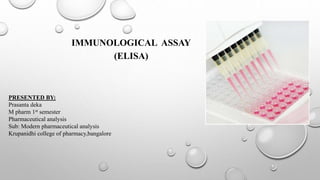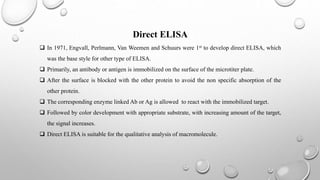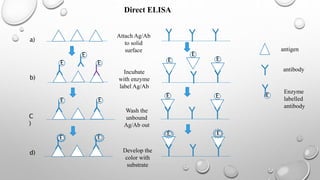The document describes the immunological assay ELISA (enzyme-linked immunosorbent assay). It discusses how ELISA uses the antigen-antibody reaction to detect the presence of antigens or antibodies. There are four main types of ELISA: direct ELISA, indirect ELISA, competitive ELISA, and sandwich ELISA. ELISA has become a popular technique due to its high sensitivity, safety, low cost, and simple instrumentation requirements. It has various applications such as detecting HIV antibodies, microorganisms, food allergens, and markers for diseases.
























